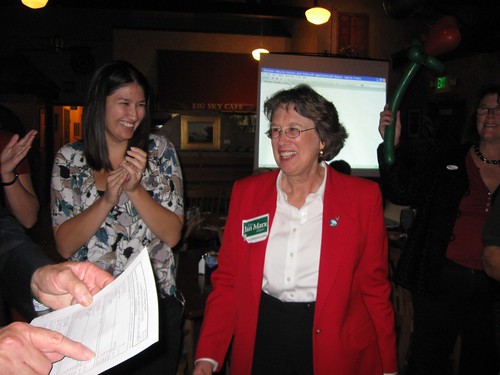Politics
Cal Poly Foundation, Divest from Fossil Fuels
Monday, May 9th, 2022Comments to Foundation Board of Directors and Finance Committee, May 7 2022
Seven reasons in three allotted minutes to divest Cal Poly Foundation from Fossil Fuel Investments
1. To respond to the well-informed, respectful and impassioned student testimony at previous meetings urging you to act on this. Clearly, today’s students and their children will be more impacted by the Climate Crisis than our generation. Providing financial support to Fossil Fuel companies that continue to play a significant role in worsening that Crisis is neglecting the University’s commitment to the welfare of its present and future students. (more…)
Central Coast Grown’s Comment on San Luis Ranch’s December 2016 DEIR on Proposed Topsoil Grading
Wednesday, January 18th, 2017I. Introduction
This comment expresses the views of Central Coast Grown(CCG), the non-profit organization selected by the SLO City Council to manage City Farm San Luis Obispo under the terms of 1) a 20-year nominal-fee lease and 2) of the 2011 Master Plan for the Calle Joaquin Agricultural Reserve (www.slocity.org/home/showdocument?id=1916). City Farm SLO is a 20-acre parcel zoned Agricultural Open Space and owned by the City, adjacent to San Luis Ranch
CCG has a strong interest in the development plans for the Agricultural Land belonging to San Luis Ranch for several reasons. As an immediate neighbor, City Farm’s operations are directly impacted by the treatment of soil and water resources on the adjoining property, in particular by any grading activities affecting land contours and soil conditions. As custodian of City Farm and a continuous onsite presence, CCG has a responsibility to uphold the intentions and terms of the Calle Joaquin Agricultural Reserve under which it operates and to which the agricultural land of San Luis Ranch will be subject, if and when it is annexed into the City. (more…)
Dharma and Darwin
Saturday, November 5th, 2016Introduction
My talk today follows in the tracks of fellow sangha members who’ve given us presentations on the convergence of scientific inquiry and the insights of traditional Buddhist precepts in the area of neurobiology and brain science. I want to explore the ways the theory of evolution that has provided a framework for all biological research during the last 150 years illuminates and is illuminated by my experience of meditation and my rudimentary understanding of Buddhist doctrine. (more…)
Mariotte Hotel Development (sequel 1)
Wednesday, October 7th, 2015Note: See earlier posting for backstory
Testimony at Architectural Review Commission at hearing October 5 2015
My name is Steven Marx. I live in San Luis Obispo and am a retired Cal Poly Professor. I testify today as the President of the Board of the Non-profit, Central Coast Grown, which holds a 20-year lease with the City of San Luis Obispo for the City Farm Property to implement the General Plan requirement to preserve “the signature agricultural landscape at the southern entrance to the City.” By the terms of that lease we are tasked with assuring that its nineteen acres are used for organic production of locally marketed crops by small local farmers and with creating educational programs about sustainable agriculture for schools and the general public. In our first year and half of operation, we have done that, staffed by one paid employee and volunteers and funded by small produce sales, grants, and contributions.
Unfortunately the matter at hand today has proceeded beyond the preliminary stages without our input, as a result of a failure of notification. It is surprising that nobody at the City who received notification long ago forwarded it to CCG or to its other neighbor, San Luis Ranch, and it’s also surprising that none of the earlier staff reports to the ARC gave adequate consideration to the larger issues stated in your Community Design Guidelines: “Scenic views and natural features around the site, and a site’s location should be considered early in project design.” (more…)
“The Time to Act is Now”
Friday, October 2nd, 2015An address at “SLO Faith Communities Respond to the Pope’s Message,” sponsored by People of Faith for Justice, October 1 2015
About a month ago, I went to the annual potluck picnic of the White Heron Sangha”a Buddhist meditation fellowship I’ve been attending for several years. It took place at a beautiful home and retreat center in Squire Canyon, and during the meal I was asked by a couple of people if I would be willing to substitute for one of the Sangha’s leaders in representing the Buddhist community at tonight’s program. He couldn’t be here because he was heading off to a retreat in India.
Being only a marginal Buddhist myself and a burnt-out former climate activist, I was reluctant to agree, but I found myself saying “yes” as I recalled recently hearing about Pope Francis’ wholehearted willingness to take on the issue. (more…)
Response to Initial Study of Calle Joaquin Hotel Development
Wednesday, September 16th, 2015Introduction
The signatories of this letter, consisting of all of the Board Members of the licensed non-profit, Central Coast Grown (http://centralcoastgrown.org) urge the San Luis Obispo Architectural Review Commission not to grant a Mitigated Negative Declaration for the Calle Joaquin Hotel Development at its meeting of October 5, 2015.
This Declaration was recommended by the contract planner hired by the City of San Luis Obispo in an “Initial Study” dated July 31 2015, but we oppose it for the reasons detailed below.
We also request that 1)the project be either rejected or thoroughly scaled back and redesigned and 2)the project be required to submit for public review and comment a full EIR with sufficient time for consideration and response. (more…)
A Visit to EldrBill
Sunday, August 28th, 2011There’s alot for an environmentalist to feel hopeless about these days, from calls for the militarization of the Arctic Ocean as a response to the melting polar icecap to the prospect of our local chapter of the Sierra Club running out of money. So I decided to take a little trip to Nipomo to express a treasurer’s appreciation to a donor whose generosity has allowed us to keep going for one more year, and also to get my spirits raised.
“Bill’s Farm” looked no worse for the wear since the last time I stopped by three years ago. I noticed an ancient carriage almost hidden by the gaggle of bicycles kept here for the use of his hostel visitors from all over the world and the array of solar panels on the roof setting off the “No Diablo” sign by the corner of the house.
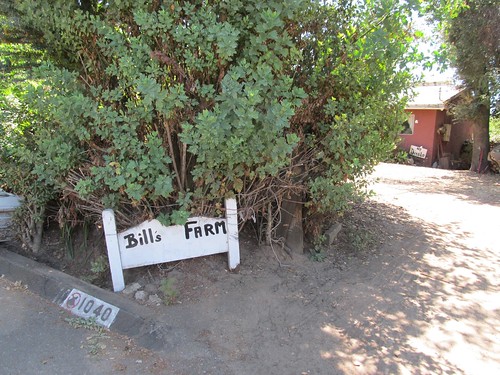
I was welcomed by a high ringing voice, and once inside surrounded by walls and tables completely covered with pictures and clippings. On the counter was a half-empty quart bottle of beer next to another one full of milk.
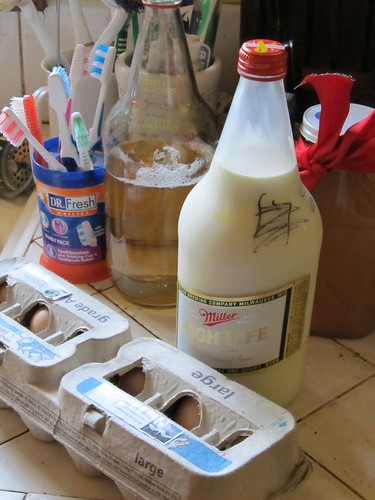
“Just did the goats,” giggled the man with flowing white hair, cascading beard, cabled arms and frighteningly tough legs revealed by his short-shorts.
“I love goat’s milk,” I said, “reminds me of my days on an old homestead in British Columbia.”
“Take it,” he answered, “and that dozen eggs from my chickens.”
“Bill, I came to say thanks,” I replied, “and here you keep giving me more.”
The phone rang and he spoke briefly to someone about the Santa Maria Times article on the table that reported his $500 environmental award to the graduating High School Senior who’d volunteered in the Nipomo Native Garden and was now heading for UCSB.
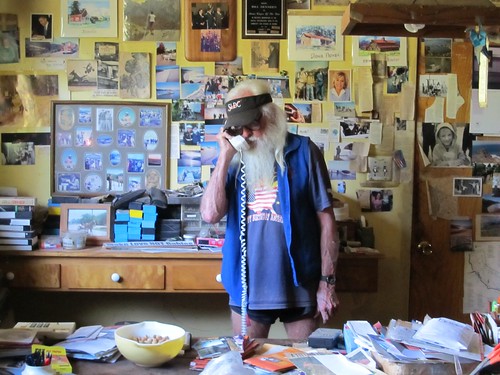
“These young people inspire me,” he said. They’re our only hope. I’m 86 and starting to lose it, but they carry the torch. Here’s another one of my heros,” he declared, pointing to a picture of Jordan Hasay: “While I was doing a triathlon a couple of years ago and just ready to throw in the towel, she came up behind me. ˜You can make it,’ she said, ˜just keep going.’ And she was right.
Then here’s Virginia Souza, she’s the President of the Natural History Museum in Santa Maria. It’s tiny, but she just hosted an event there for the Chamber of Commerce which brought out forty people. In Santa Maria! She was a biology student of mine way back when. I introduced her to the idea of ecology. Here’s an award for the 40th anniversary of Earth Day she gave me last year.”
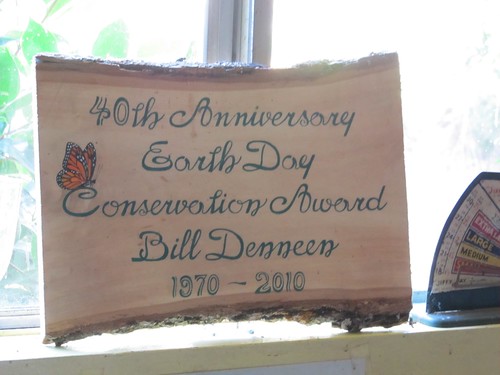
“And this is my woman’s wall. Next to the fridge, pictures and articles about Barbara Boxer, Lois Capps, Hilda Zacarias, Lisa Jackson, Dixie Chicks, Sonia Sotomayor, Ruth Coleman, Marion Jones, Steph Brown, Kathy Goddard Jones. “I remember your Dad, Henry,” Bill chuckled. “He used to tell me how the dunes were ˜so sensual.'”
That must have been 20 years ago, when my father was just about Bill’s age now. “How old are you?” he asked.
“Sixty nine,” I answered, “just retired.”
“My sixties were my best decade,” said Bill. “Learning how to appreciate things because the end was in sight, but still capable.”
He brought over a stack of postcards and said, “here, take a few.” The top one was a photo of a sand dune gracefully curved against the sky. Running up it was a black lab next to a perfectly formed naked young woman. “I’ve worked to save those Dunes and Point Sal for 50 years–from a Nuclear Power Plant, from a Coal Fired power plant, from a housing development, from developers. And now they’re safe in perpetuity, since the SLO Land Conservancy just purchased the last developable property. Lets go out back.”
We passed his desktop computer surrounded by magazines and books, where Bill composes his “Nipomo Free Press,” an email newsletter that includes commentaries on the latest news and on long term issues as well as responses from his readers”precursor of the blog. We talked of another hero, writer and 350.org organizer Bill McKibben, who was sitting in a Washington jail after leading a protest against Obama’s approval of the XL Pipeline. We passed the chickens scratching in the sand, the empty pigpen”the pig was in the freezer”and the goat corral. He climbed nimbly over a high gate into an overgrown orchard of apple and tangello trees heavy with fruit that I sampled and picked. “I just cant keep these up any more,” he said with a twinkle. Don’t get old.”
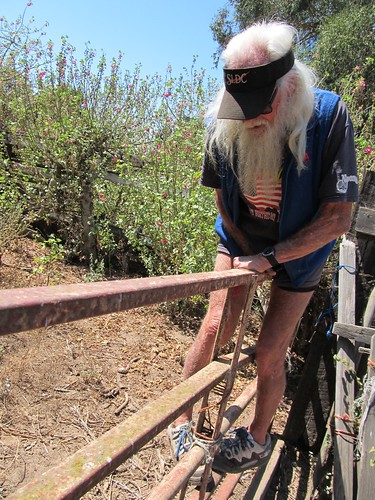
On my way back to the car weighted down with eggs, milk and fruit, I felt lightened. Instead of dreading yet another meeting to discuss grant applications, budgets, and liability insurance, I was eager to share Eldr Bill’s harvest with the volunteers at the potluck that night.
Thanks, Trader Joe’s
Sunday, November 7th, 2010the prequel: Traitor Joe’s
from SLO New Times
It may be of interest to readers who shop at Trader Joe’s that the company has agreed to shift all its seafood purchases to sustainable sources by December 12, 2012. This decision came after a campaign called “Traitor Joe’s,” mounted by Greenpeace, pressured the company to abide by the Monterey Bay Aquarium’s “red list” of species to avoid.
Trader Joe’s had refused to do that and didn’t reply to e-mails from customers back in February, but I just discovered an update on their website stating the intention to “address customer concerns including the issues of over fishing, destructive catch or production methods, and the importance of marine reserves.” Hooray for Greenpeace, for Trader Joe’s, and for its customers.
Election Night 2010
Wednesday, November 3rd, 2010Slideshow
This is a win for San Luis Obispo. Jan will serve effectively and humanely. She has the talent, the experience and the dedication to do an excellent job as mayor, leading and representing the City”which according to last month’s newspapers is both the most desirable place to live in America and is about to fall off a cliff. Either way, it will benefit from her leadership.
It’s a win for her, because it provides the opportunity to fulfill not an ambition, but an ongoing mission of public service and leadership. When I first met her 44 years ago as a junior at Stanford, she organized a campaign to get women equal rights with men to live off campus at much cheaper rents than those in the dormitory. This involved facing down the President of the University who wasn’t eager to lose the revenue provided by the policy of protecting female purity.
When we lived in the wilds of British Columbia during the 1970’s, she helped found a satellite campus of a community college and became its first director. When we moved back to California, she got a job as Director of Graduate Student Housing at Stanford and devised a network of neighborhood coordinators”now called Community Associates–which still remains vital.
While attending Law School, she organized the mature returning students and then took a part-time job as a law clerk involving the preparation of a landmark Supreme Court case assuring equal opportunity for women in the workplace.
When we moved to San Luis Obispo 22 years ago, she immediately embarked on a course of public service that led to appointment to the County Parks and City Planning Commissions and to her election to City Council in 1998 and again 2008. All of her political and humanitarian work in this place has been volunteer or for minimal pay, for she’s been able to make her living as an attorney.
The mayor’s job will allow her to use and expand abilities cultivated over a lifetime.
It’s a win for me, not only for the reflected glory”imagine the pleasure I’ve taken in knocking on thousands of doors and telling whoever opens them about the virtues of the woman I love, and in posting hundreds of signs of tribute to her all over town. But also imagine what it would be like to live with someone this energetic and smart whose time was not occupied being in charge of a whole city.
So here’s to our new mayor, and to this fleeting moment of triumph, and to all of you who contributed in one way or another to make it happen.

